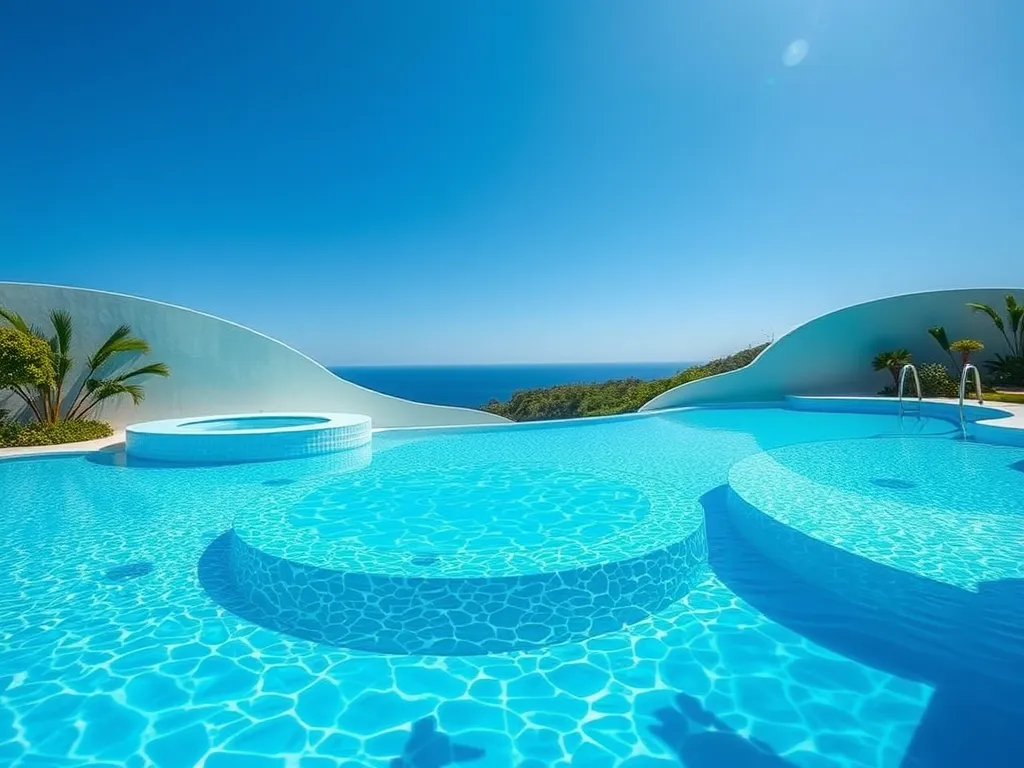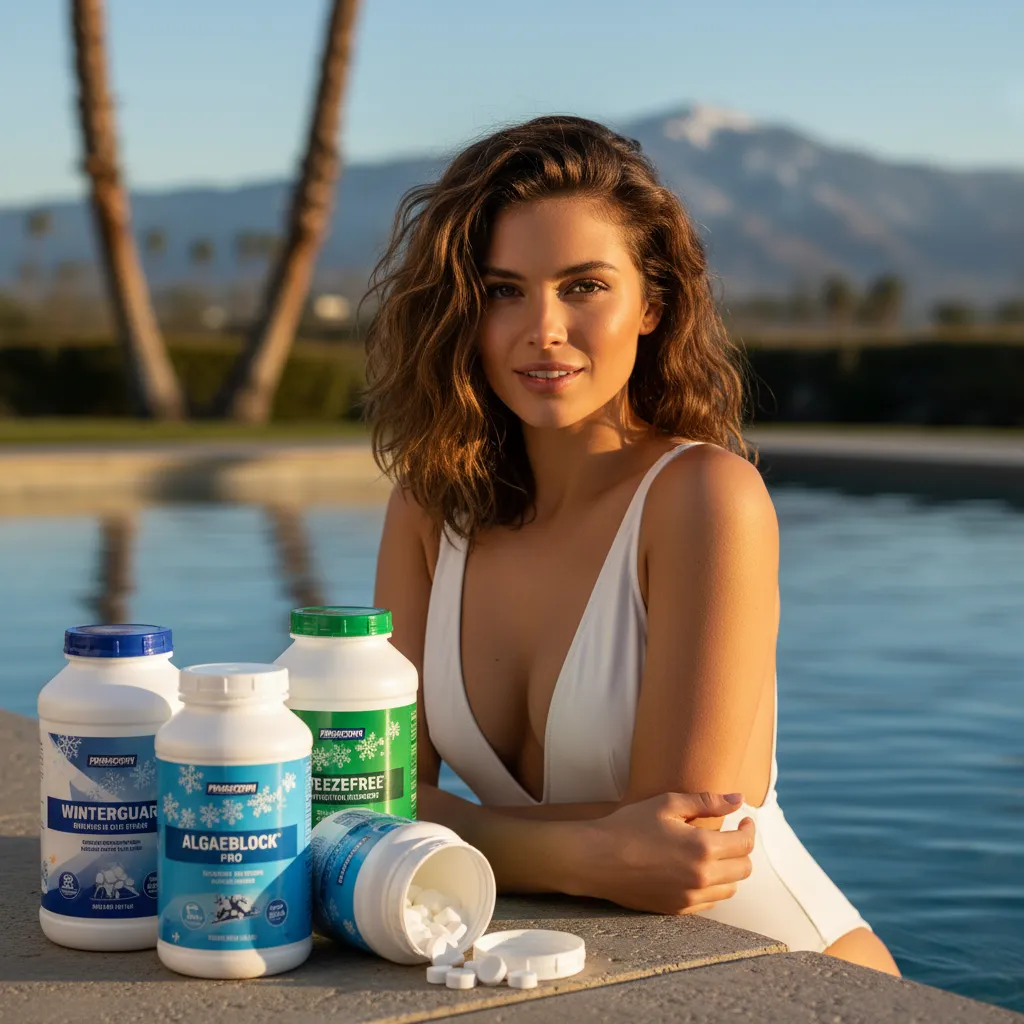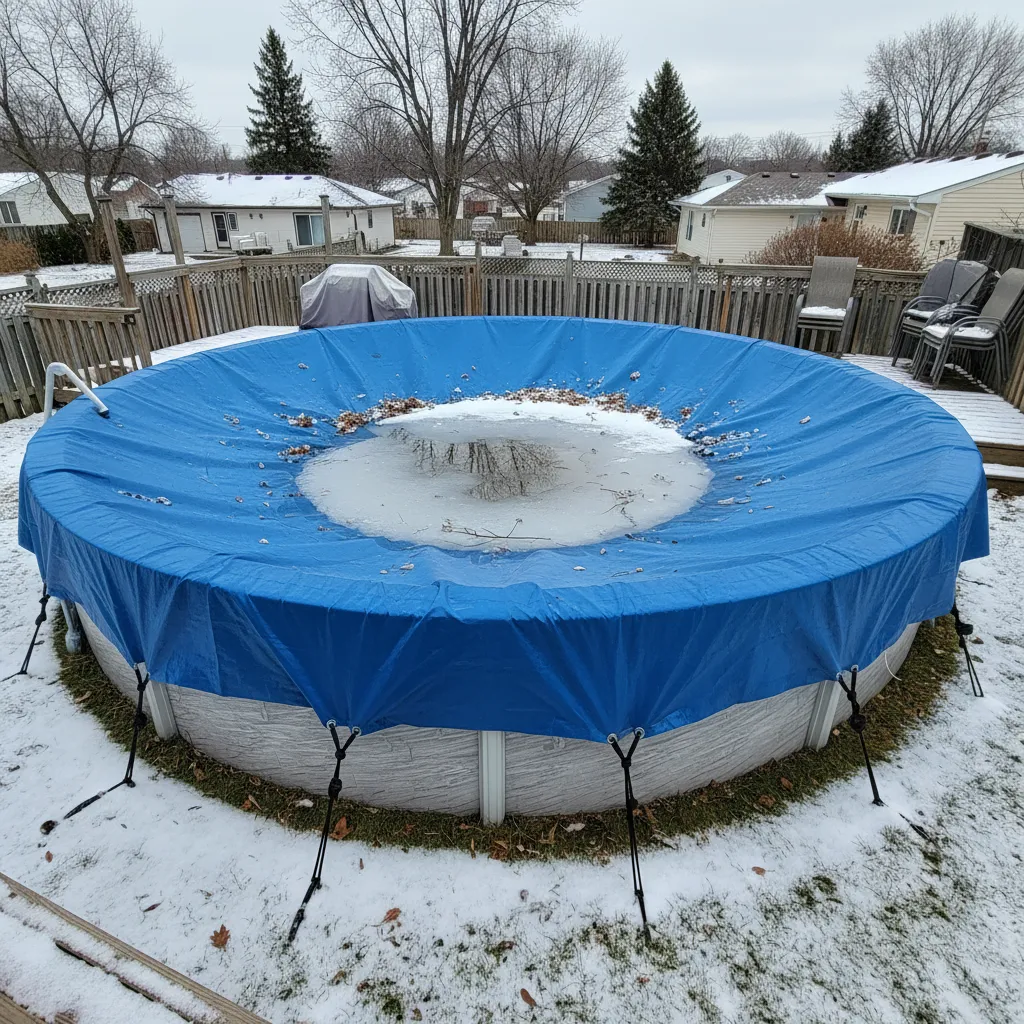Muriatic Acid Dosage for Pools: A Simple Guide
Published on: April 12, 2025 | Last Updated: April 13, 2025
Written By: Lila Fairholme
Muriatic acid helps balance pool water pH. High pH can cause cloudy water and scaling. Low pH may damage equipment. This acid lowers pH safely when used correctly. Always test water first. Wear gloves and goggles. Never add acid directly to skimmers. Let’s calculate your pool’s needs!
Muriatic Acid Dosage Calculator
class=”explanation”>Always add acid to water slowly. Never add water to acid. Wait 4 hours before retesting pH.
How to Use
- Test pool water with reliable strips
- Enter values in all fields above
- Click Calculate
- Add ¾ of suggested amount first
- Retest after 4 hours
Muriatic Acid Dosage for Pool: Key Factors Impacting Treatment
Proper muriatic acid dosing requires precision. Variables like pool volume, water chemistry, and environmental conditions dictate how much acid you’ll need. Let’s break down the elements influencing dosage calculations. Knowing how to manage these factors is essential for maintaining a healthy pool. Regularly adding muriatic acid helps balance the pH levels, ensuring clear and safe water for swimmers.
Crucial Winterizing Products
"The all-in-one solution for a guaranteed clear spring opening."
All-in-One Closing Chemical Kit
Winter demand is high - check stock
"The 'set & forget' option. This is the easiest winterizing I've ever done."
Simple 3-in-1 Winterizing Balls
Winter demand is high - check stock
"Invest once to protect your liner and prevent a swamp in the spring."
Heavy-Duty Winter Pool Cover
Winter demand is high - check stock
Pool Volume and Gallons Of Water
Total water capacity is the starting point. A 10,000-gallon pool requires half the acid of a 20,000-gallon pool for the same pH adjustment. Measure your pool’s length, width, and average depth to calculate volume. Rectangular pools use: Length × Width × Depth × 7.5. Circular pools: Radius² × 3.14 × Depth × 7.5. Free-form designs may require professional measurement tools. When considering a pool size, the total volume plays a key role in maintenance. A 10,000-gallon pool can be easier to manage, making it a popular choice for many homeowners.
Current Vs. Target Ph Levels
Muriatic acid lowers pH by 0.1 units per 2-4 oz in 10,000 gallons. If your pool’s pH is 8.0 and the target is 7.4, you’ll need approximately 12-24 oz for a 10,000-gallon pool. Use a digital pH meter or test strips to verify baseline levels before treatment. Ideal pool pH ranges from 7.4 to 7.6. Keeping your pool’s pH balanced is essential for safe swimming. Muriatic acid is an effective solution for maintaining the right conditions in your pool water.
| Current pH | Target pH | Acid Needed per 10k Gallons |
|---|---|---|
| 8.0 | 7.5 | 10-20 oz |
| 7.8 | 7.4 | 8-16 oz |
| 7.6 | 7.2 | 8-12 oz |
Alkalinity and Calcium Hardness
Total alkalinity (TA) acts as a pH buffer. High TA (above 120 ppm) resists pH changes, requiring more acid. Low TA (below 80 ppm) causes pH swings. Balance TA to 80-120 ppm before adjusting pH. Calcium hardness above 400 ppm can also stabilize pH, demanding incremental acid additions.
Acid Strength and Formulation
Standard muriatic acid contains 31.45% hydrochloric acid. Some products are diluted to 15% for safer handling. Always check concentration labels. For example, a 20,000-gallon pool needing 32 oz of 31.45% acid would require 64 oz of a 15% solution.
Muriatic Acid Dosage Guidelines for Common Pool Sizes
General dosing recommendations provide a starting point. Always retest water 4-6 hours after application.
Small Pools (5,000-10,000 Gallons)
- pH reduction of 0.1: 1-2 oz (31.45% acid)
- pH reduction of 0.2: 2-4 oz
- Never exceed 16 oz per treatment cycle
Medium Pools (15,000-20,000 Gallons)
- pH reduction of 0.1: 3-6 oz
- pH reduction of 0.3: 9-18 oz
- Maximum single dose: 32 oz
Large Pools (25,000-30,000 Gallons)
- pH reduction of 0.1: 5-10 oz
- pH reduction of 0.4: 20-40 oz
- Split large doses into multiple treatments
Also See: Pump Run Time Calculator: Optimize Your Pump’s Time

Safety Protocols for Handling Muriatic Acid
Hydrochloric acid fumes are corrosive. Follow OSHA and ANSI safety standards:
- Wear nitrile gloves, goggles, and respirators
- Add acid to water – never water to acid
- Store in original containers away from chlorine tablets
- Neutralize spills with baking soda (1 lb per 16 oz spill)
Ventilation and First Aid
Work in open-air environments. If fumes are inhaled, move to fresh air immediately. For skin contact, rinse with water for 15 minutes. Seek medical attention for chemical burns. It’s also important to be aware of the chemicals you use, especially around pools. Fire extinguishers and pool chemicals can react in dangerous ways, so keep them stored safely and separately.
Muriatic Acid Storage and Shelf Life
Proper storage maintains potency. Keep containers in cool (50-70°F), dry areas. Avoid UV exposure. Unopened acid lasts 2-3 years. Opened containers degrade 20% annually due to HCl gas evaporation. It’s essential to check the expiration dates on pool chemicals. Expired chemicals can lose effectiveness and may not keep your pool safe and clean.
Compatibility With Pool Equipment
High doses can corrode metal ladders, heaters, and concrete surfaces. Maintain pH above 7.0 to prevent damage. For vinyl liners, avoid pouring acid directly onto material.
Advanced Application Techniques
Seasoned pool technicians use these methods:
Pre-dilution Method
- Fill a 5-gallon bucket with pool water
- Add acid slowly (1:10 ratio)
- Pour mixture around deep end returns
Circulation Optimization
Run pump run time at 2,800 RPM for 2 hours post-application. Brush pool walls to eliminate acid pockets. For saltwater pools, test salinity after treatment – acid can lower salt levels by 200-400 ppm. The pump run time is crucial for ensuring proper chemical distribution. Adjusting the run time can help maintain balanced water chemistry in your pool.

Environmental Factors Affecting Dosage
Outdoor conditions alter acid demand:
- High temperatures (above 85°F) accelerate pH rise
- Heavy rainfall dilutes acid effectiveness
- Leaf debris increases organic acid demand
Seasonal Adjustments
Summer pools typically need 16-32 oz weekly. Winterized pools may require monthly doses of 8-16 oz. Always adjust based on water testing frequency.
FAQs: Muriatic Acid Dosage for Pool Maintenance
How Much Muriatic Acid Lowers Ph by 0.2 In a 15k Gallon Pool?
Use 6-12 oz of 31.45% acid. Add half the dose, wait 4 hours, then retest before adding remainder.
Can I Add Muriatic Acid and Chlorine Simultaneously?
No. Acid neutralizes chlorine. Wait 2-4 hours between treatments. Maintain free chlorine at 1-3 ppm.
Signs Of Over-acidification?
pH below 7.0 causes eye irritation, metal corrosion, and etching of plaster surfaces. To correct, add 12 oz soda ash per 10k gallons to raise pH by 0.4.
How Often Should I Add Muriatic Acid?
Weekly during swimming season. Test pH 2-3 times weekly. Pools with salt chlorinators often need biweekly adjustments.
Does Calcium Hardness Affect Acid Dosing?
Yes. Hard water (400+ ppm calcium) requires 15-20% more acid per pH adjustment. Soft water (<200 ppm) may need 10% less.
Alternative Ph Control Methods
For those avoiding muriatic acid:
- Sodium bisulfate (dry acid): 1.25 lbs equals 1 qt muriatic acid
- CO2 injection systems: $1,500-$3,000 installation
- Aeration: Raises pH naturally through water agitation
Cost Comparison
Muriatic acid costs $0.25-$0.50 per gallon-treated. Sodium bisulfate averages $0.75-$1.00. CO2 systems reduce acid use by 60% but require upfront investment.
Professional Vs. DIY Acid Treatment
Service companies charge $75-$150 per acid treatment. DIY costs $5-$15 monthly. Consider professional help if:
- pH fluctuates more than 0.4 units daily
- Persistent scaling or corrosion occurs
- You handle more than 1 gallon monthly
For precise dosing tailored to your pool’s chemistry, visit My Pool Calculator.
Useful References for You:
- CDC – Healthy Swimming & Pool Safety Guidelines
- How to Safely Add Muriatic Acid In Your Pool to Lower pH and Alkalinity
- Understanding the Power of Muriatic Acid in Pool Maintenance
- How Much Muriatic Acid to Add to Adjust Swimming Pool pH – Dengarden
- r/pools on Reddit: How much muriatic acid do I poor into a 30,000 gallon pool?





